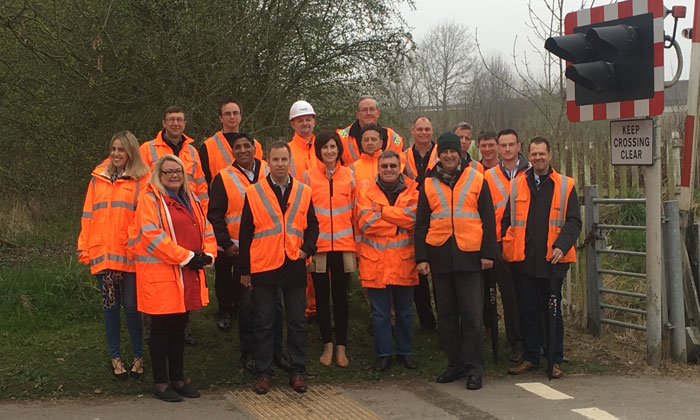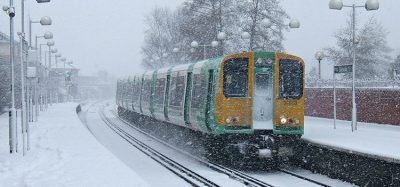Aussie action on level crossing safety: TrackSAFE Foundation
Posted: 30 May 2018 | Naomi Frauenfelder - TrackSAFE Foundation Australia | No comments yet
When you think about Australia, barbeques, vegemite and kangaroos immediately come to mind, but there’s something else we focus on and that’s level crossing safety, discusses Naomi Frauenfelder, Executive Director TrackSAFE Foundation.


Whether its facilitating collaborative discussions, advocating nationally to keep the issue high on the agenda or advancing education via curriculum-based resources in schools, the TrackSAFE Foundation is doing its bit to advance level crossing safety and awareness in Australia.
We are a national harm-prevention charity and we work to reduce near hits, collisions and fatalities on the rail network resulting from suicide, reckless behaviour and human error. In doing so, TrackSAFE is also aiming to create a better workplace for rail employees.
With such a mission, we place level crossing safety high on our priority list. Australia’s rail network is the sixth largest in the world, with 44,000km of track and 23,500 level crossings across the network. Sadly, we experience far too many near hits as well as collisions between pedestrians or vehicles and trains at level crossings each year – with some collisions tragically resulting in death or permanent injury.
Incidents at level crossings can cause severe and lasting trauma for train drivers and other rail employees, not to mention the associated risks for community members involved.
Every two years, TrackSAFE hosts a major Level Crossing Safety Forum which brings together representatives from the rail industry with police, government and the regulator, as well as road user groups and research bodies to share knowledge and collaborate on the issue. Delegates from across Australia and New Zealand are presented with an excellent opportunity to workshop on all aspects of level crossing safety from engineering and enforcement to risk mitigation and human factors.
We’re also acutely aware that we need to look beyond our white sands and understand what’s happening in the international space when it comes to level crossing safety. It’s evident that every country in the world faces the same challenges we do. In 2017, we ran our first International Level Crossing Safety Study Tour to investigate level crossing safety overseas.
TrackSAFE led a delegation of senior rail executives – from within the Australasian rail industry – to the U.S. and UK to investigate ways in which other countries manage risk around crossings and which strategies, technologies and innovations might be applicable in Australia. You can read about our study tour findings in our report located on the TrackSAFE website.


The learnings we brought back from the study tour fed into an action plan for Australia: Australia has its own National Level Crossing Safety Strategy 2017 – 2020. This strategy guides national coordination and best practice for level crossing safety across jurisdictions. With so many variances in level crossing safety relating the application of technology and control systems between roads and rail networks, as well as jurisdictional governance and ownership, the strategy provides a single source of coordination on the issue.
TrackSAFE, also in 2017, offered level crossing safety scholarships to two PhD students in sunny Queensland. The scholarship – delivered in partnership with the Rail Manufacturing CRC – offered students an ideal opportunity to combine academic research with real-world level crossing projects being delivered by the Queensland rail industry. We greatly look forward to seeing the students grow their expertise in the area of level crossing safety to benefit the Australian community.
PhD students are not our only target audience, we recently ran a competition for high school students challenging them to produce an innovative solution to reduce the chances of injuries or fatalities occurring at pedestrian level crossings.
The group of four students (aged only 13 and 14) who won our pedestrian level crossing challenge designed a reflective barrier to address distraction by mobile phones at level crossings. When a pedestrian approaches the crossing looking down at their phone or listening to music, the reflective material reflects light and catches the pedestrian’s attention. They then have to manoeuvre through the barrier, causing them to stop and look around. A simple, yet elegant solution to combat mobile phone distraction at pedestrian level crossings.
The competition enabled young minds to think deeply about rail safety and design practical solutions to solve real-world problems, whilst making a difference in their local community.
Each year, TrackSAFE proudly participates in International Level Crossing Awareness Day (ILCAD) along with 40 other countries from around the world. We also hold our own annual awareness week – Rail Safety Week – in August. Rail, police and government organisations work together to run initiatives designed to engage the community in safe rail practices. Thanks to more than 130 organisers from 70 different organisations across Australia and New Zealand, Rail Safety Week events and campaign messages reach communities all over Australasia.
While we’re on the subject of campaigns, TrackSAFE also maintains a priority on level crossing safety during harvest. Grain season in Australia sees a lot of additional freight trains operating meaning a lot more activity at rural and regional level crossings. Important reminders are issued to the community cautioning them to take extra care around level crossings during this time. This campaign is especially important as some rail lines are only used during grain season so local communities need to be alert and cautious.
In Australia, TrackSAFE has been encouraged by state government initiatives to upgrade, or in some cases even remove, notorious level crossings. The Victorian Government, for example, allocated up to AU$2.4 billion to kickstart the removal of 50 of Victoria’s worst level crossings. Up to 28 of the 50 will be removed by the end of 2018.
It’s important that along with infrastructure improvements, also come behavioural improvements which can only be achieved through education and awareness. This is why the TrackSAFE Foundation continually advocates for level crossing safety and, as you can see, we approach the issue from all angles.
One collision is one too many but level crossing incidents can be avoided if people simply take their time and obey the warning signs and signals in place for their own safety.
Biography


NEW REPORT FROM GLOBAL RAILWAY REVIEW: Track Insight – Track Maintenance | Transforming Track Maintenance Through Technology
Our latest expert-led Track Insight explores how industry leaders are revolutionising the future of track maintenance through cutting-edge innovation and real-world strategies.
From automation and robotics now streamlining inspections and repairs, to predictive maintenance powered by IoT sensors and advanced analytics, the rail sector is entering a new era of precision and efficiency. Companies like Goldschmidt, Bentley Systems, and MxV Rail are leading the charge, redefining how infrastructure is managed with AI, machine learning, and digital twins to reduce downtime and extend asset life.
In this new data-rich landscape, organisations such as Amtrak and the Rail Accident Investigation Branch are demonstrating how to turn vast streams of information—from track geometry to environmental monitoring into actionable intelligence for safer, smarter networks.
Download this insightful, practical guide for FREE and see how your operations can evolve – READ FOR FREE NOW!








